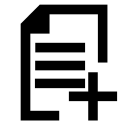The class S double-decker multiple units played an important role in local transport in the Sydney area between 1972 and 2019. They were recognizable by their corrugated iron side walls and were the last Sydney Trains vehicles that were not air-conditioned. Comeng and A Goninan & Co. built 287 motor cars, 67 trailers and 85 control cars. The trains were initially used as four-car “S-sets” or two-car “T-sets”. Later, the trains were put together into other combinations and all control cars were converted into trailers. From 2012 they were replaced by the new class A and B. 